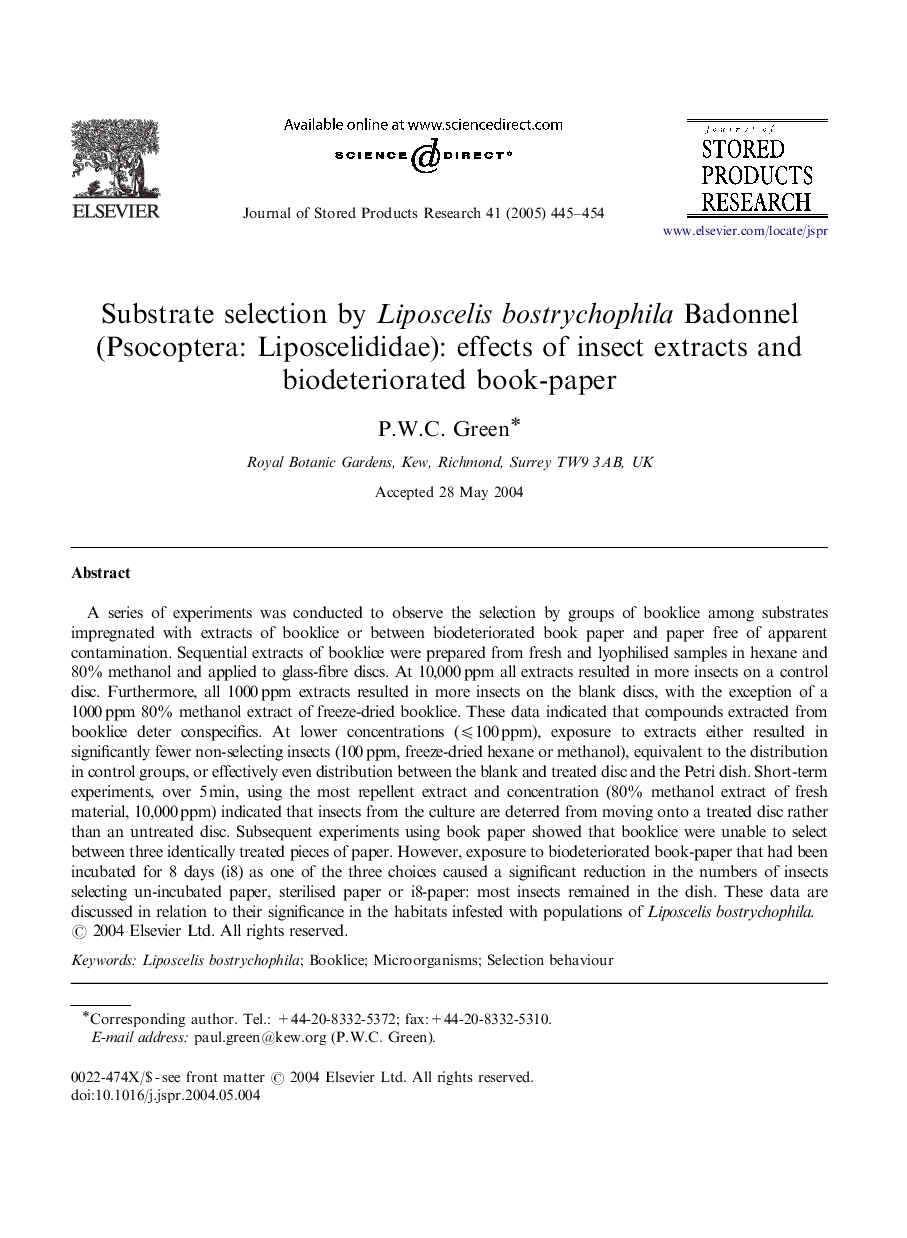| Article ID | Journal | Published Year | Pages | File Type |
|---|---|---|---|---|
| 9474855 | Journal of Stored Products Research | 2005 | 10 Pages |
Abstract
A series of experiments was conducted to observe the selection by groups of booklice among substrates impregnated with extracts of booklice or between biodeteriorated book paper and paper free of apparent contamination. Sequential extracts of booklice were prepared from fresh and lyophilised samples in hexane and 80% methanol and applied to glass-fibre discs. At 10,000 ppm all extracts resulted in more insects on a control disc. Furthermore, all 1000 ppm extracts resulted in more insects on the blank discs, with the exception of a 1000 ppm 80% methanol extract of freeze-dried booklice. These data indicated that compounds extracted from booklice deter conspecifics. At lower concentrations (⩽100 ppm), exposure to extracts either resulted in significantly fewer non-selecting insects (100 ppm, freeze-dried hexane or methanol), equivalent to the distribution in control groups, or effectively even distribution between the blank and treated disc and the Petri dish. Short-term experiments, over 5 min, using the most repellent extract and concentration (80% methanol extract of fresh material, 10,000 ppm) indicated that insects from the culture are deterred from moving onto a treated disc rather than an untreated disc. Subsequent experiments using book paper showed that booklice were unable to select between three identically treated pieces of paper. However, exposure to biodeteriorated book-paper that had been incubated for 8 days (i8) as one of the three choices caused a significant reduction in the numbers of insects selecting un-incubated paper, sterilised paper or i8-paper: most insects remained in the dish. These data are discussed in relation to their significance in the habitats infested with populations of Liposcelis bostrychophila.
Related Topics
Life Sciences
Agricultural and Biological Sciences
Agronomy and Crop Science
Authors
P.W.C. Green,
